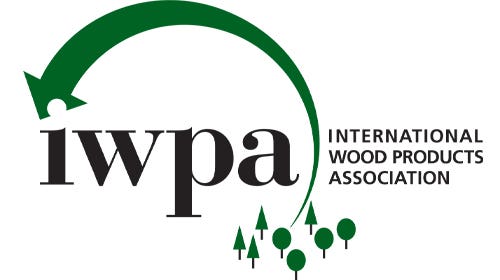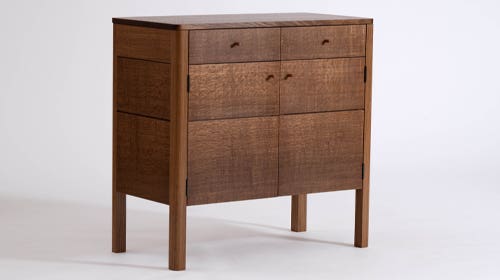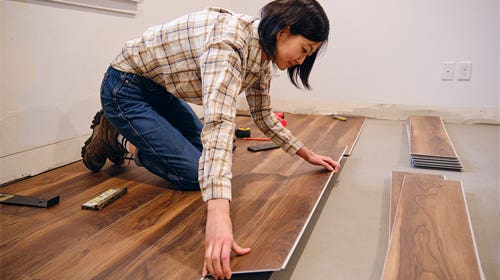Teak substitute is gaining influence
Iroko is becoming more popular in Europe, but it has yet to replace the real thing in the U.S., despite its lower price Iroko is an African hardwood that has…
Iroko is becoming more popular in Europe, but it has yet to replace the real thing in the U.S., despite its lower price
Iroko is an African hardwood that has often been referred to as the poor man’s teak. At about a third of the price of genuine teak, and with fairly similar working properties, the name seems to be an appropriate fit.
Iroko (Chlorophora excelsa), also known as kambala and African teak, is a massive tree that grows in a large region of West Africa, reaching heights up to 150' with diameters in excess of 7'. Iroko has been popular in Europe for years, but has never caught the eye of the buying public on this side of the Atlantic.
“My feeling is Americans have been on the kick about genuine teak for a very long time,” says Fabs Corte, a retailer with Cormark International in Weaverville, N.C. “Genuine teak is what they use in boatbuilding, genuine teak is what they’ve always known, and they’ve never wanted to get out of that comfort zone. When you look at iroko, it’s something the Europeans use quite a lot of. It’s very popular over in Europe. I think that it is a great alternative; it’s something that can be used for outdoor use, it has the oiliness of genuine teak. It is somewhat similar in look. At a quick glance you could mistake it for genuine teak and, on closer inspection, you’ll see the subtle differences.”
“It’s one of those name-recognition things,” agrees Rick Hearne, owner of Hearne Hardwoods in Oxford, Pa. “It’s like 20 years ago, when they were trying to sell ipé decking. As long as [genuine teak] is still available and is going into the class of boats that can afford teak, they’ll keep using teak.
“But I think it is only a matter of time before iroko catches on here. The more issues [the genuine teak market] has with Myanmar, human rights and all of that, the less is going to become available and buyers are going to be looking for a substitute.”
The heartwood of iroko is a medium brown and the sapwood is pale brown. The wood has a coarse texture and the grain is often wavy and interlocking. The wood has the approximate strength, hardness and resistance as teak, but its bending properties are inferior. Iroko has a specific gravity of .55.
“It’s always been around, but it has just become more popular because of the high increase in teak prices,” says Matt Westmoreland, a wholesaler with World Timber Corp. in Hubert, N.C. “A lot of people want butcher-block countertops and they used to do a lot of those islands out of teak, but now they’re doing most of them out of iroko. I don’t sell much 4/4, but I sell a lot of 8/4 for the countertops. That seems to be the most popular trend for it. The boards get to be pretty big; you get anything from 6' to 15' long and anything from 4" to 20" wide.”
Iroko is used primarily for marine applications, countertops, interior and exterior furniture, cabinets, flooring, frames and trim. The wood dries well and can be finished to a high luster.
“We’ve sold it to some people doing fine furniture that are looking for a golden-brown color where teak is either too narrow or too light a color, and it is a beautiful golden-brown color,” says Hearne.
Its working properties are similar to teak, but because of minerals that are found in the wood, iroko can be very abrasive on cutting tools.
“It will take the edge right off your tools,” Hearne says. “If you’re running high-speed steel, you can hear your machine getting louder as it goes through. It’s one of those woods where you want to make sure you have carbide cutters.”
“I always remember seeing a log in West Africa, about 8" to 10" in diameter, which had huge chunks of rock in it,” says Myles Gilmer, owner of Gilmer Wood Co. in Portland, Ore. “There were lots of sparks, which is something I don’t like to see when I’m sawing wood.
“I’ve sold it as a teak substitute before, but I never said it was a great substitute. The color is off. For me to call it a teak substitute, it would have to be something that you could use in a marine environment and with the same kind of aesthetic-type feel. There’s nothing with iroko that is anywhere similar to teak.”
Iroko is readily available in 6" to 12" wide boards. It’s sold in 4/4 and 8/4 thicknesses from about two dozen dealers in the United States. It retails for about $10 to $12/bf.
This article originally appeared in the June 2009 issue.







